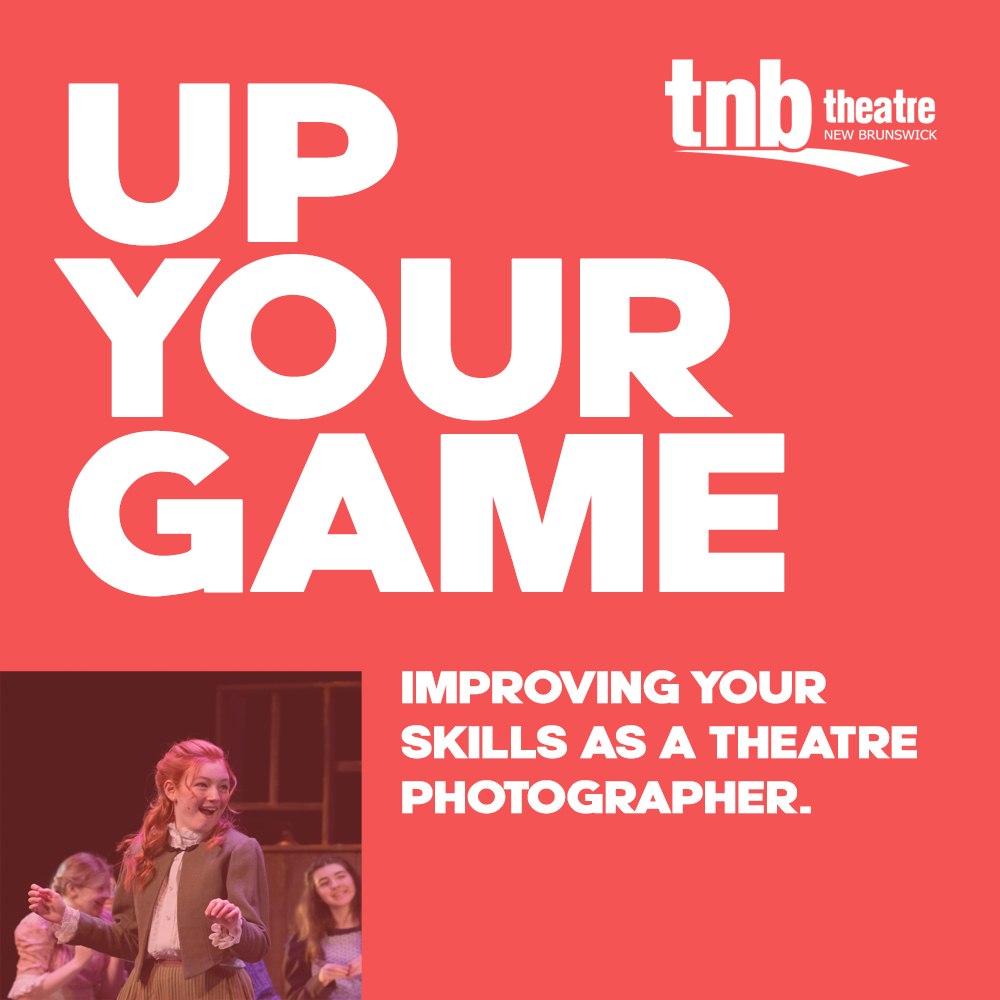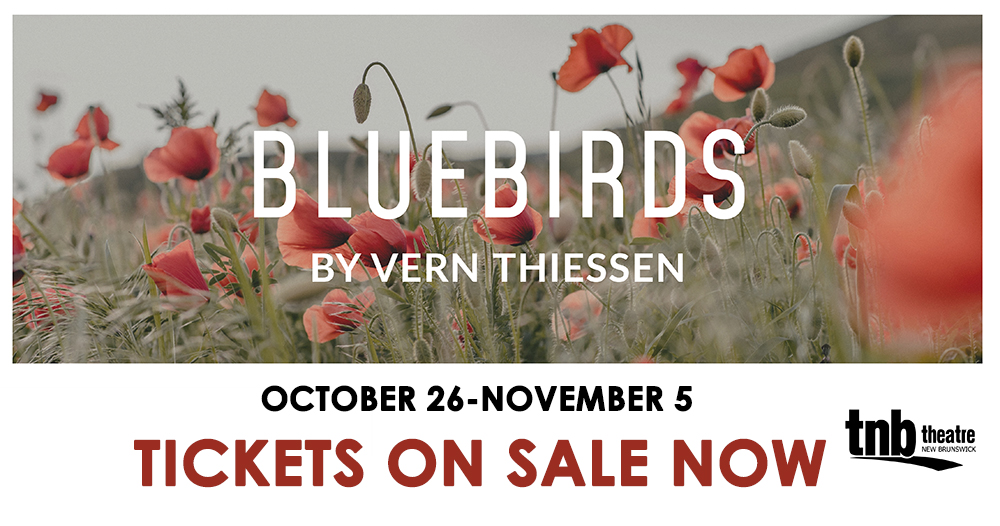
During the month of May, we ran a series of weekly posts on our Instagram feed exploring the basics of theatre photography. Due to the positive feedback received during the series’ run, we decided to compile the five posts into one and share it here. Enjoy!
Matt Carter
I’ve had the good fortune and opportunity to shoot rehearsal photos for a number of theatre groups in Fredericton over the last several years. I’ve shot university productions with Theatre UNB, outdoor theatre shows with Bard in the Barracks, festival mainstage productions with NotaBle Acts Theatre Festival and have done work with Solo Chicken Productions, Falling Iguana Theatre, Connection Dance Works and Theatre New Brunswick. It’s a lot of fun, and I’ve learned a tremendous amount through my experience.
Up until I was given the opportunity to document my first theatre production, my photography experience mainly involved live music and art photography. Two very different areas of the craft. As I would quickly learn, properly capturing a theatre production involves an entirely different set of skills. But most importantly, it involves understanding exactly what it is you’re trying to document. That’s been the biggest lesson I’ve learned. Sure, you’re taking photos of what’s happening on stage, but are you taking the right photos? What does that even mean?
Why do we take rehearsal photos?
This is the first and most important question to answer. In order to create a good set of rehearsal photos, it’s important to understand the purpose your photos will serve. Unlike live music photography, or food photography, or portraiture, or most other forms of photo work for that matter, theatre photography serves the needs of several different aspects of any given show. These include capturing images to promote the show itself, respectfully documenting the actors on stage, capturing the hard work of set, lighting and costume designers, and showcasing how all these different elements work together to make a production come to life on stage.
When thinking about promotional shots, a photographer needs to think beyond the camera and the often limited lighting we’re dealing with, and instead think about the kind of images that grab our attention. What kind of photo makes you do a double-take or can stop you mindlessly scrolling through your social feeds? From my experience, wide angle shots are key for this purpose. Something big that captures the elements of the whole shebang. Actors, set, lights, costumes all working together. This is an opportunity to show potential audience members what’s in store at the theatre and why they should buy a ticket.
Besides creating content to help sell the show, we’re also acting as documentarians, a task that goes far beyond capturing the faces of actors on stage. How do the design elements work to support the story? How do the costumes compliment the actors and the story? How does the lighting affect the mood of the set at a particular point in the story? These are a few good questions we should always try to answer through our work as theatre photographers. How you choose to answer those questions is completely up to you and your camera.
Is there anything I can do to prepare in advance?
I like to think of photographing theatre as an adventure because no two production experiences are ever the same. And as with any adventure, your success is often the result of how well you prepare in advance. A little prep work can go a long way because when the lights go down, you’re really on your own. And there will be people counting on you to deliver a set of photos that meet all the needs we already mentioned.
In my experience, knowing as much about the show in advance has always proven helpful. How many actors will be on stage? What does the set look like? How will the show be lit, and how light or dark will the opening scene be?
These are all questions I have, at one time or another, wished I asked in advance. Dark colours absorb a lot of light. And dimly lit dark colours can be a nightmare to capture if you’re not expecting them. Many times, I’ve dialed in my camera’s settings for low light minutes before the curtain went up only to be surprised by just how low some designer’s interpretation of low light can get! Or the complete opposite: BRIGHT LIGHTS!
As photographers, we need to be fluid and able to adapt quickly. Any advantage helps. Having to reconfigure your settings during the first scene of the first act is never fun and can leave you feeling unsettled for the remainder of the show.
Finally, understanding a play’s structure can be a helpful guide when trying to capture all the important elements as they reveal themselves. With the exception of musicals, which have a tendency to exist in a constant state of motion, a traditional theatre performance allows a little more time to establish a scene, therefore allowing us more time to create an accurate document of any particular moment.
If you can speak with the director prior to the performance, you can avoid a lot of unexpected challenges right off the bat.
Question: Is there anything I can do to prepare in advance?
(Short) Answer: Yes. Show up early and ask lots of questions.
How do I sort through all these photos?
Taking pictures is only half the job. Once the curtain closes and the lights come up, the next job involves editing and then deciding which images to share. If you have an itchy shutter finger, you may be setting yourself up for a lot more work on the back end than you really need to. The best way to avoid adding to your workload is simple – take fewer photos.
As amateur photographers, working in theatre can sometimes cause us to create an unnecessary sense of “I need to capture everything”. But you don’t have to. Any really, you shouldn’t. It’s important to leave space and in most cases, leave a bit of mystery for potential audiences. If you show them the whole show, you’re taking away one reason to buy a ticket. I’ve seen a few instances where companies have uploaded 200+ photos to an event’s Facebook page on opening night, basically creating a flipbook that outlines the entire show.
Editing on the fly is essential to culling your collection and limiting your edit time once the performance has ended. Capture a scene and its elements (actors, set, costume, lighting) as best you can and then take a minute to do a quick review deleting where necessary. Be selective in what you keep. And don’t worry if you miss a moment of onstage action. That’s completely fine.
Another way to lighten your load on the editing side is knowing when to press the shutter. While it’s impossible to avoid the occasional shot of an actor with their eyes closed, it is relativity easy to avoid awkward facial expressions by simply waiting for a pause in dialogue to take your shot. This is just one important trick I learned through my experience shooting theatre over the past six of seven years. I’d love to hear any tricks you picked up on to make your workload lighter. If you want to share something, write it in the comments.
Here are few last minutes things to consider that apply to any photography scenario:
USE NEW SMART MEDIA CARDS WHENEVER POSSIBLE – Nothing can make you panic like the shock and awe of realizing you’ve run out of room on the only card you brought. Trust me. Having to suddenly review and delete old files from your memory card while trying to watch what’s happening on stage can make a stressful situation even worse. Use new cards whenever possible and keep a backup in your gear bag.
CHARGE YOUR BATTERY – Again, another seemingly obvious task that I have neglected, at least once, assuming I still had lots of juice left from the last charge. The horror….
CLEAN YOUR LENSES – You should always give your lenses a little TLC before taking photos. A simple wipe with a soft cloth can go a long way in reducing your post-shoot editing time.
That’s about it. For now anyway. Happy shooting!
-Matt
Theatre New Brunswick

